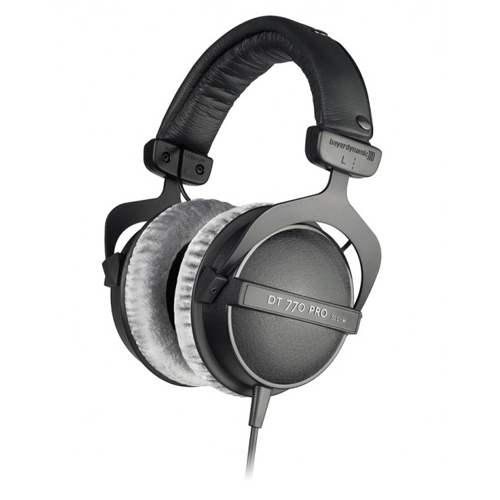
I was sitting around the house today feeling a little out-of-place. Besides all of the anxiety with my benefit compilation, “… and darkness came“, something else was missing from my daily routine. By noon, after posting a sarcastic rant on my FB page on Beats by Dr. Dre [my least favorite topic, I assure you], I finally figured out what it was. Since the events of Hurricane Sandy, and all of the hours I’ve put into my release, I haven’t had the chance to review any music! I’ve been so busy with organizing the playlist, that I had no time to listen, let alone cover the albums on my list! And with the end of 2012 just around the corner, it is unlikely that I’ll have a chance – after all, I have that Best of 2012 list to work on!
But there was something that I could write about! Instead of spreading that bottled up negativity, I could be educating the public with positive recommendations! So, on to my second installment in equipment reviews. And before I proceed, let me dispel any doubts as to what my true intentions are. No, I’m not getting paid by anyone to promote the product, and no there is no soft-dollar kick back of any kind either – although, I wouldn’t mind to be on the list to try out the latest set of headphones from any of my favorite manufacturers. Most, if not all, of the equipment I [will] cover, I own – in many cases for several years. So please treat these words as my personal recommendations just for you.
Beyerdynamic has been founded by the Berlin born Eugen Beyer. The German based audio equipment manufacturer produced loudspeakers for film palaces in 1924 and moved over to dynamic headphones by 1930s. Then the war came, and the company had to freeze all production. In 1948 Beyerdynamic relocated to Heilbronn, where till this day, with only about 300 employees, it manufactures microphones, conference systems, aviation headsets, and of course, headphones. I first discovered the brand (and this particular pair) when browsing around some hi-fi message boards. I’ve read a few reviews, and after trusting in the ears of audiophiles and their expensive measurement tools, decided to shell out $250 (MSRP) for a brand new pair.
My first impression was immediately positive. First, I was incredibly pleased by the soft and fuzzy velour ear pads, that cradled my head like a pair of cushioned ear muffs. Comfort may not be the highest priority for most purveyors of sound, but I assure you, after a couple of hours of listening, they may change their mind. And it’s not just the ear pads that make this closed headphone feel snugly on my cranium. There’s the soft padded headband that wraps neatly around my crown, and at only 335g (about 11oz), the circumaural constructions feels compact and tight. I tried walking around with them on the street, and was only put off by the length and thickness of the cable that I had to tuck inside my pocket. Perhaps a small price to pay by some, but I really prefer to use them in my studio. Afterall, the DT 770 is a reference headphone for “control and monitoring applications”. OK, so what about the sound?
Because the pair is a closed-back (sealed as opposed to open on the side) headphones, the set naturally blocks some of the outside ambient noise. The bass is responsive and tight, easily reproducing some of the thumpiest tunes in my playlist. Although a closed-back pair of headphones will give up some of that open-air feel in the soundscape, I had no problems listening to ambient and drone. But I must admit, with a pair of Beyerdynamics I seem to gravitate towards the lower-end frequency-rich tracks. They feel a bit less brighter than the pair of Audio-Technica I have reviewed, but at the same time deeper and warmer. As I write this, I’ve got Emptyset‘s Collapsed (Raster-Noton, 2012), covering the entire spectrum of sounds, at a pretty loud volume.
There are a few more notes on the pair I must cover. The DT 770s come with a built-in limiter (factory set at 99dB)! That means that when the threshold is reached, a passive circuit is used to reduce the audio signal by 6 dB (instead of hard clipping). If this technology concept is of interest, you can read more about it on the manufacturer’s FAQ. Also the PRO suffix in the model means that the headphones are designed for studio and stage professional use. The PRO also boasts the “bass-reflex-openings” at the side of each housing, to allow for the frequencies to “breathe” better, by the moving diaphragm. Don’t worry about this particular modifier in the model – we are all professionals here, right?
And finally, the listed impedance of 80 Ohms. This requires a whole other paragraph of discussion. Basically, the higher the impedance, the more power you will need to drive the headphone and get a proper output volume. At 80 Ohms (Beyerdynamic also manufactures a 250 Ohms version), this pair can easily be driven by a laptop, MP3 player, and iPhone. The impedance of the headphone has to do with the voice coil, which is a winded copper wire with a particular thickness (and thus associated resistance). The thicker wire has less resistance and low impedance, but does not move as easily (it’s bulkier). The thinner wire has more resistance, higher impedance, and a more ‘natural’ movement (and reproduction of sound), but doesn’t sound as loud and needs a better amplifier. You need more power to push this thinner wire to the same volume.
Again, comparing this pair to a marketing ploy of other, less qualified artist-branded headphones, is not even a subject of this discussion. It’s really day and night in terms of sound reproduction – and I challenge anyone to compare the products side by side! If you’re a bass-head (I’m talking to you, head-nodding warehouse dweller, you know who you are), then you will absolutely love these cans at your day-job desk! And best of all, no one will be able to hear your beats! And I bet you can even find them at $200 USD!
Other models that I want to try: DT 990 250 Ohm, T90 250 Ohm, T1 Audiophile 600 Ohm
MSRP – $249.00 USD
beyerdynamic.com







